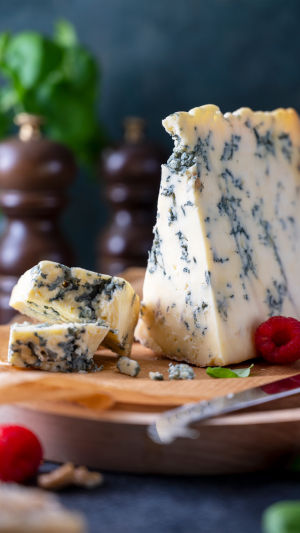Cheese is a delectable dairy product crafted from the milk of various animals, including cows, sheep, and goats.
The process of making cheese involves coagulation, fermentation, and drying.
With its ancient roots and global presence, cheese is not only relished as a culinary delight but also holds a significant role in the realms of cooking and dim sum preparation, among other applications.
1. Historical Background and Origins
The origins of cheese can be traced back to antiquity, likely emerging as soon as humans began domesticating animals for dairy production. Archaeological evidence points to the Middle East as the birthplace of cheese-making thousands of years ago.
Notable civilizations such as Ancient Egypt, Greece, and Rome have documented references to cheese. These societies curdled and fermented milk, resulting in a spectrum of cheeses characterized by varying flavors and textures.
2. Craftsmanship
The intricate art of cheese-making unfolds through a series of meticulous steps:
Milk Coagulation: The process commences by heating the animal's milk, followed by the addition of enzymes or acids such as lactic acid bacteria or lemon juice. This prompts the proteins to coagulate, leading to the formation of curds – solid clumps of proteins.
Curds Preparation and Draining: The curds are carefully cut into smaller fragments, facilitating the separation of water from the curd. Through draining, the water is extracted, leaving behind a more concentrated, solid substance.
Salting and Pressing: The addition of precise amounts of salt elevates the cheese's taste and texture. Subsequently, the curds are pressed to eliminate any remaining excess moisture.
Fermentation and Maturation: Pressed curds are transferred into suitable containers for fermentation. The duration of fermentation and the type of bacteria or mold employed profoundly influence the cheese's flavor, texture, and aroma. Different temperature and humidity conditions during maturation also contribute to the final taste.
Flavor Infusion (Optional): Some cheese varieties incorporate diverse seasonings, spices, fruits, nuts, and more towards the conclusion of the production process, imbuing the cheese with its distinctive flavor profile.
3. Diverse Cheese Varieties
The universe of cheese boasts an assortment of types, categorized based on production methods, source materials, origins, and fermentation processes. Here are several prominent examples:
Cheddar Cheese: Originating in England, Cheddar cheese boasts a robust flavor and firm texture. It can be savored in various stages of maturity, ranging from mild to intensely flavorful.
Blue Cheese: Infused with molds, blue cheeses exhibit intricate blue veins on their interior. These cheeses offer a potent taste and typically possess a creamy consistency.
Soft Cheeses: Exemplified by Brie and Camembert, these cheeses possess a velvety exterior enveloping a rich, smooth-textured interior.
Hard Cheese: Beyond Cheddar, Parmesan stands out as an iconic hard cheese requiring prolonged aging to attain its characteristic solid texture and deeply resonant flavor.
Swiss Cheese: Emmental and Gruyère exemplify Swiss cheeses, characterized by expansive, uniform holes and a sturdy consistency.
Cheese's timeless legacy and diverse nature render it a cherished presence on tables across the globe. Whether relished as a standalone treat or incorporated into various dishes, cheese tantalizes the taste buds with its intricate flavors and textures.





